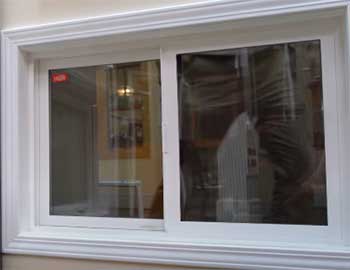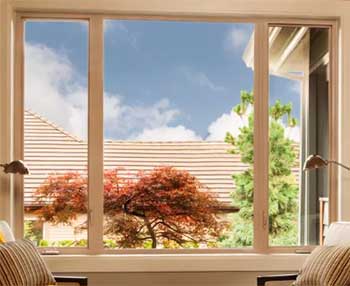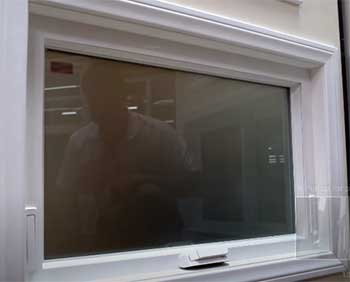If you’re in the market for new windows, you’ve likely come across Milgard as an option. This trusted brand has been manufacturing windows since 1958 and is known for their high-quality products.
Two of Milgard’s most popular window lines are the V300 and V400 series. But what’s the difference between these two options and which is better for your home?
In this comprehensive guide, we’ll compare the Milgard V300 and V400 windows to help you determine the right choice for your needs and budget. We’ll look at the key factors like materials, energy efficiency, cost, aesthetics, and more. Read on for the full breakdown.
| Feature | Milgard V300 | Milgard V400 |
| Frame Material | Vinyl | Fiberglass |
| Glass | Double pane, SunCoat Low-E | Triple pane, SunCoat Low-E |
| Energy Efficiency | Meets ENERGY STAR in most zones | Exceeds ENERGY STAR in all zones |
| Config Options | Single/double hung, slider, picture, specialty | Added casement, awning, specialty |
| Color Options | White or tan exterior, white interior | White or tan exterior and interior |
| Warranty | 10 years parts/materials, glass, finishes | 10 years parts/materials, glass, finishes |
| Cost | Mid-range pricing | 20-30% higher than V300 |
Key Takeaways:
- Milgard V300 windows are a mid-range vinyl series with good energy efficiency and classic styling.
- Milgard V400 windows are premium fiberglass with maximum efficiency, contemporary aesthetics, and slimline design.
- V400 fiberglass frames offer superior strength, insulation, and durability compared to V300 vinyl.
- V400 windows have triple glazing versus V300’s double pane glass for better thermal performance.
- V400 meets ENERGY STAR requirements everywhere while V300 meets them in most climate zones.
- V400 comes in more configuration styles like casements and awnings.
- V400 costs 20-30% more upfront but can pay off through energy savings long-term.
- Warranties are equal between both series at 10 years for materials/parts and glass.
- V300 vinyl is ideal if you want quality on a budget. V400 fiberglass is worth the investment for top-tier performance and construction.
Milgard V300 Series Overview
The Milgard V300 series is their mid-range vinyl window option. Some of the key features include:

- Frame material: Vinyl with fiberglass reinforcement
- Glass: Double pane with SunCoat Low-E coating
- Energy efficiency: Meets ENERGY STAR® requirements in most regions
- Configuration options: Available as single hung, double hung, horizontal slider, picture windows, radius, and specialty shapes
- Color options: White or tan exterior with white interior
- Warranty: 10 years on parts and materials
The V300 vinyl windows are designed to provide an affordable, energy-efficient update. While vinyl isn’t as strong or luxurious as fiberglass or wood, it’s durable and low-maintenance. The fiberglass reinforcement adds stability while keeping the windows lightweight.
Overall, V300 windows strike a good balance between cost and performance. They’re a solid midrange option suitable for most climates.
Milgard V400 Series Overview
The V400 represents Milgard’s premium fiberglass window. The main features include:
- Frame material: Pultruded fiberglass
- Glass: Triple pane with SunCoat Low-E
- Energy efficiency: Exceeds ENERGY STAR® requirements in all regions
- Configuration options: Available as single hung, double hung, horizontal slider, picture windows, radius, casement, awning, and specialty shapes
- Color options: White or tan interior and exterior
- Warranty: 10 years on parts and materials
Fiberglass is stronger and more thermally stable than vinyl. The pultruded fiberglass frames are highly impact resistant while offering excellent insulation. Triple glazing further boosts the energy efficiency.
With their sleek contemporary profiles, V400 windows make a statement. More glass area provides increased natural light. The premium construction and components ensure superior performance and durability.
Overall, V400 windows are Milgard’s top-of-the-line fiberglass model built for optimal viewing, energy savings, and longevity.
Comparing Materials: Vinyl vs Fiberglass
One of the biggest differences between the V300 and V400 is the frame material. Let’s look at how vinyl and fiberglass stacks up:
Vinyl
- Budget-friendly
- Low maintenance
- Fiberglass reinforcement increases durability
- Prone to expansion/contraction
- Not as strong or thermally efficient as fiberglass
Fiberglass
- Very strong and impact resistant
- Dimensionally stable
- Excellent thermal performance
- Contemporary slimline aesthetics
- Higher cost than vinyl
Vinyl works well for many homes, particularly in milder climates. It’s affordable and easy to care for. But for superior strength, unrivaled insulation, and modern styling, fiberglass can’t be beat.
Energy Efficiency Comparison
Energy efficiency is another area where these two Milgard series differ.

The V300 windows have double pane glass with SunCoat Low-E coating.
This helps reflect heat and insulates against cold drafts.
V300 windows meet or exceed ENERGY STAR® requirements in most regions.
Meanwhile, the V400 series features triple glazing with SunCoat Low-E.
The three panes of glass with two air spaces provide excellent thermal insulation. V400 windows surpass ENERGY STAR® standards in all climate zones.
In energy efficiency testing, V400 windows perform around 13% better on average than the V300 series. This difference can save homeowners money on energy bills over time, especially in areas with extreme winters or summers.
Installation and Replacement Considerations
Milgard windows are installed by trained professionals. Existing windows need to be removed before the new units are precisely measured.
V300 and V400 windows can typically be swapped into the same openings. However, V400 fiberglass frames are slimmer. If you’re replacing another type of window, the interior trim may need adjustment for a clean fit.
Full-frame replacement is recommended whenever possible for best performance. But both series also offer insert options to match existing frame dimensions.
Milgard provides detailed installation instructions for all their windows. They also have experts available to answer any questions throughout the process.
Aesthetics and Design Options
Beyond performance, you also want new windows that improve your home’s curb appeal and match your style.
The V300 series offers simple styling with clean lines. Frames are available in white or tan, with a white interior across all windows. The classic colors pair well with many home exteriors.
For a sleek contemporary look, V400 windows make a bold statement. The smooth fiberglass frames come in standard white or tan. V400 picture windows provide panoramic views that maximize natural light.
Both window lines allow for custom sizes and specialty shapes like arch tops. However, V400 has a few more configuration options like casement and awning styles.
If matching existing architecture and décor is important, V300 vinyl windows blend in easily. The V400 fiberglass windows offer more modern styling.
Cost Comparison
Now let’s discuss the price difference between the two series.
As Milgard’s mid-tier offering, the V300 vinyl windows are the more budget-friendly option. Their pricing is comparable to other brands’ midrange vinyl windows.
The V400 fiberglass windows have premium components like pultruded frames and triple glazing. These features come at a higher cost. V400 windows are priced similarly to high-end wood or fiberglass windows from other manufacturers.
On average, V400 windows run 20-30% more than V300 in terms of upfront purchase price. However, V400 windows can pay off their higher price over time through energy savings. Improved comfort and noise reduction provided by the fiberglass can also boost resale value.
For a more precise estimate, get a quote based on the windows needed for your home. This allows you to compare the two series side-by-side.
Warranties
All Milgard windows come with extensive warranties that provide peace of mind:
- 10 years on parts and materials
- 10 years for glass seal failure
- Lifetime guarantee on vinyl finishes
The same comprehensive coverage applies to both the V300 and V400 series. Milgard also offers a lifetime limited warranty that covers defects in materials and workmanship.
Which Milgard Windows Series is Better For You?
Now that we’ve compared these two options in detail, let’s summarize the key differences:
Milgard V300

- Mid-range vinyl windows
- Double pane glass
- Meets ENERGY STAR® in most zones
- Classic styling and colors
- Budget-friendly pricing
Milgard V400
- Premium fiberglass construction
- Triple glazing for superior efficiency
- Exceeds ENERGY STAR® everywhere
- Contemporary slimline aesthetics
- Higher upfront cost but excellent value
Frequently Asked Questions (FAQ)
Milgard’s top-tier window series is the V400. These premium fiberglass windows offer maximum energy efficiency along with superior strength, durability, and aesthetics.
Milgard is consistently rated as one of the best window manufacturers nationwide. Their windows are praised for quality construction, energy savings, low maintenance, and excellent warranties. Milgard’s V400 fiberglass series is considered their finest product line.
Milgard offers vinyl, fiberglass, wood, and aluminum frame options:
Vinyl: Tuscany® Series and V300 Series
Fiberglass: V400 Series
Wood: EssenceTM Series
Aluminum: UltraTM Series
Fiberglass and wood are their highest quality frame materials.
Pella and Milgard both make excellent windows. Key differences:
Pella offers wood interior options while Milgard uses vinyl or fiberglass across their lines.
Milgard V400 fiberglass is more energy efficient than Pella Impervia.
Milgard has better warranty coverage overall.
Pella provides more style and color customization possibilities.
For superior energy savings and warranties, Milgard is a great choice. Pella excels for custom wood interiors and wide range of aesthetic options.
Final Thoughts
For many homeowners, the V300 vinyl series hits the sweet spot of quality, energy efficiency, and affordability. These windows are ideal if you want an upgrade on a budget.
However, if you want the absolute best in terms of performance, aesthetics, and longevity, the V400 fiberglass windows are worth the investment. Their construction and components are second to none.
Take time to carefully evaluate your needs, climate, budget, and style preferences. This will help determine whether the V300 or V400 is the right choice to make your home more comfortable and beautiful for years to come.
